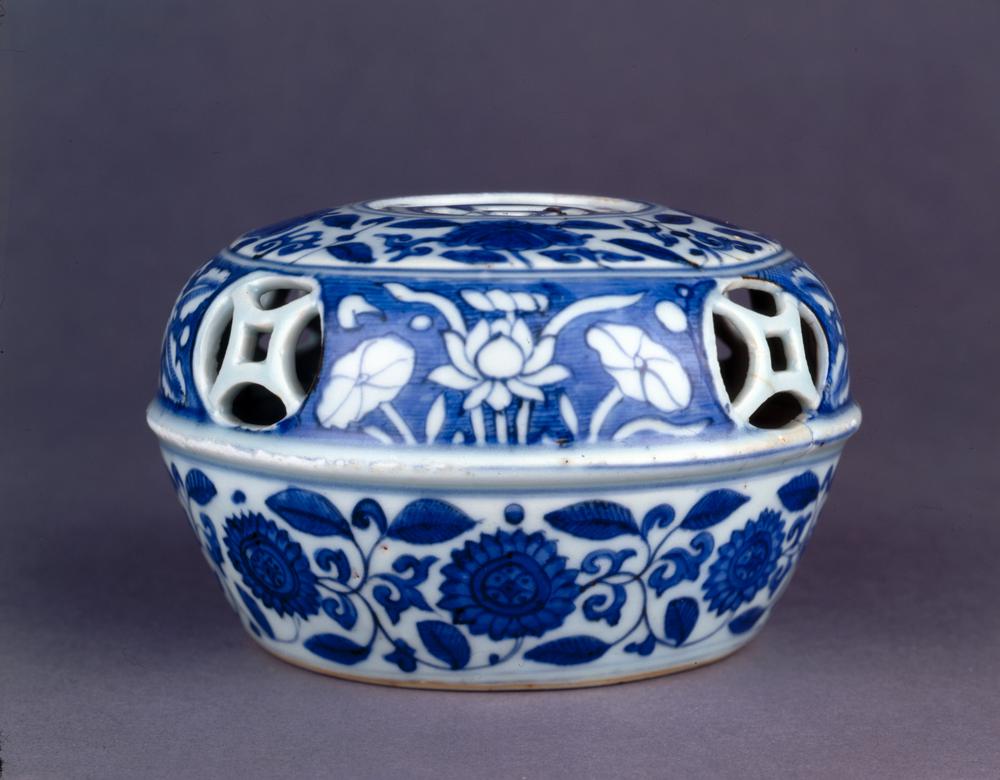Period:Five Dynasties and Ten Kingdoms Production date:939
Materials:silk, 絲綢 (Chinese),
Technique:painted
Subjects:buddha bodhisattva 佛 (Chinese) 菩薩 (Chinese) 供養人 (Chinese)
Dimensions:Height: 74 centimetres Width: 61 centimetres
Description:
Painting showing a seated Buddha Maitreya, flanked by Mañjuśrī and Samantabhadra. Maitreya’s features are rendered in orange. Image of Mañjuśrī is well-preserved, with features only outlined in ink, never having been coloured. Samantabhadra very badly damaged. Donor figures in the lower register, flanking a damaged, dated inscription. Ink and colour on silk.
IMG
![图片[1]-painting; 繪畫(Chinese) BM-1919-0101-0.41-China Archive](https://chinaarchive.net/Five Dynasties and Ten Kingdoms/Paintings/mid_00000452_001.jpg)
![图片[2]-painting; 繪畫(Chinese) BM-1919-0101-0.41-China Archive](https://chinaarchive.net/Five Dynasties and Ten Kingdoms/Paintings/mid_RFC648.jpg)
![图片[3]-painting; 繪畫(Chinese) BM-1919-0101-0.41-China Archive](https://chinaarchive.net/Five Dynasties and Ten Kingdoms/Paintings/mid_RFC648_1.jpg)
![图片[4]-painting; 繪畫(Chinese) BM-1919-0101-0.41-China Archive](https://chinaarchive.net/Five Dynasties and Ten Kingdoms/Paintings/mid_RFC648_2.jpg)
Comments:EnglishFrom Whitfield 1983:Although severely damaged, this painting, since it bears a dated inscription (Fig. 16), is of interest in helping to establish the features of stylistic development in the tenth century. It is painting of modest size, painted on a single piece of silk 61 cm wide, and in general arrangement very close to Stein painting 49 (Fig. 18). Indeed the resemblance is close enough to suggest that Maitreya, here identified by a pink cartouche, is the central figure in that painting as well. Here he is attended by Manjusri 聞隨師離菩薩 and Samantabhadra 聞隨補賢菩薩.The features of Maitreya are rendered in an intense orange colour, schematically applied. The exposed part of the chest appears almost as a rectangle (Pl. 17-2). The same stiffness is observable in Manjusri on the right, whose body is extremely long in proportion to the space left for the legs. This occurs since the three canopies and heads of the main figures are all on one level, while the lotus pedestals of the two Bodhisattvas are necessarily at a lower level than that of the central Buddha. Samantabhadra’s face if very clearly preserved (Pl. 17-3), as it was apparently never coloured and so still displays only the original ink drawing, without any lines subsequently added to accentuate the forms. Particularly noticeable are the straight line drawn to divide the lips, extending far to either side and angled downwards, and the manner in which the eye projects well beyond the contour of the face. ChineseFrom Whitfield 1983:此畫雖傷殘嚴重,卻具有紀年的題記(參照Fig.16),是考證10世紀時繪畫發展的珍貴的樣例。描繪在寬61釐米的一幅絹子上的較小型作品,其整體結構與Fig.18非常相似。本圖中尊淡茶色的長方形題箋中記有彌勒佛的名字,推斷Fig.18的中尊也是彌勒佛。本圖彌勒佛隨帶著二尊,左邊記有聞隨補賢菩薩(普賢菩薩),右邊記有聞隨師離菩薩(文殊菩薩)。彌勒佛的身體上是深橙色,略加了圖式化的暈染(參照圖17-2)。上衣間露出的胸口部分呈長方形,同樣僵硬感覺的表現也見于右側文殊菩薩的身上。文殊菩薩的上半身顯得異常長,那可能是因爲,儘管按需要把兩脅侍菩薩台座描繪得比中尊的台座低,但最初已將三尊的頭部和華蓋都描繪到平行的高度所導致的。文殊菩薩(參照圖17-3)的臉部保存完好,但見不到塗彩的痕迹。因此,其線描都是底稿的墨線,一点沒有加入完成時的勾勒線。特別值得注意的,是唇線拉出的直線,從嘴唇兩端向臉頰伸長,其兩端向下呈彎曲的鈎形,右眼越出臉部輪廓線外。
Materials:silk, 絲綢 (Chinese),
Technique:painted
Subjects:buddha bodhisattva 佛 (Chinese) 菩薩 (Chinese) 供養人 (Chinese)
Dimensions:Height: 74 centimetres Width: 61 centimetres
Description:
Painting showing a seated Buddha Maitreya, flanked by Mañjuśrī and Samantabhadra. Maitreya’s features are rendered in orange. Image of Mañjuśrī is well-preserved, with features only outlined in ink, never having been coloured. Samantabhadra very badly damaged. Donor figures in the lower register, flanking a damaged, dated inscription. Ink and colour on silk.
IMG
![图片[1]-painting; 繪畫(Chinese) BM-1919-0101-0.41-China Archive](https://chinaarchive.net/Five Dynasties and Ten Kingdoms/Paintings/mid_00000452_001.jpg)
![图片[2]-painting; 繪畫(Chinese) BM-1919-0101-0.41-China Archive](https://chinaarchive.net/Five Dynasties and Ten Kingdoms/Paintings/mid_RFC648.jpg)
![图片[3]-painting; 繪畫(Chinese) BM-1919-0101-0.41-China Archive](https://chinaarchive.net/Five Dynasties and Ten Kingdoms/Paintings/mid_RFC648_1.jpg)
![图片[4]-painting; 繪畫(Chinese) BM-1919-0101-0.41-China Archive](https://chinaarchive.net/Five Dynasties and Ten Kingdoms/Paintings/mid_RFC648_2.jpg)
Comments:EnglishFrom Whitfield 1983:Although severely damaged, this painting, since it bears a dated inscription (Fig. 16), is of interest in helping to establish the features of stylistic development in the tenth century. It is painting of modest size, painted on a single piece of silk 61 cm wide, and in general arrangement very close to Stein painting 49 (Fig. 18). Indeed the resemblance is close enough to suggest that Maitreya, here identified by a pink cartouche, is the central figure in that painting as well. Here he is attended by Manjusri 聞隨師離菩薩 and Samantabhadra 聞隨補賢菩薩.The features of Maitreya are rendered in an intense orange colour, schematically applied. The exposed part of the chest appears almost as a rectangle (Pl. 17-2). The same stiffness is observable in Manjusri on the right, whose body is extremely long in proportion to the space left for the legs. This occurs since the three canopies and heads of the main figures are all on one level, while the lotus pedestals of the two Bodhisattvas are necessarily at a lower level than that of the central Buddha. Samantabhadra’s face if very clearly preserved (Pl. 17-3), as it was apparently never coloured and so still displays only the original ink drawing, without any lines subsequently added to accentuate the forms. Particularly noticeable are the straight line drawn to divide the lips, extending far to either side and angled downwards, and the manner in which the eye projects well beyond the contour of the face. ChineseFrom Whitfield 1983:此畫雖傷殘嚴重,卻具有紀年的題記(參照Fig.16),是考證10世紀時繪畫發展的珍貴的樣例。描繪在寬61釐米的一幅絹子上的較小型作品,其整體結構與Fig.18非常相似。本圖中尊淡茶色的長方形題箋中記有彌勒佛的名字,推斷Fig.18的中尊也是彌勒佛。本圖彌勒佛隨帶著二尊,左邊記有聞隨補賢菩薩(普賢菩薩),右邊記有聞隨師離菩薩(文殊菩薩)。彌勒佛的身體上是深橙色,略加了圖式化的暈染(參照圖17-2)。上衣間露出的胸口部分呈長方形,同樣僵硬感覺的表現也見于右側文殊菩薩的身上。文殊菩薩的上半身顯得異常長,那可能是因爲,儘管按需要把兩脅侍菩薩台座描繪得比中尊的台座低,但最初已將三尊的頭部和華蓋都描繪到平行的高度所導致的。文殊菩薩(參照圖17-3)的臉部保存完好,但見不到塗彩的痕迹。因此,其線描都是底稿的墨線,一点沒有加入完成時的勾勒線。特別值得注意的,是唇線拉出的直線,從嘴唇兩端向臉頰伸長,其兩端向下呈彎曲的鈎形,右眼越出臉部輪廓線外。
© Copyright
The copyright of the article belongs to the author, please keep the original link for reprinting.
THE END
![[Qing Dynasty] British female painter—Elizabeth Keith, using woodblock prints to record China from the late Qing Dynasty to the early Republic of China—1915-China Archive](https://chinaarchive.net/wp-content/uploads/2022/11/image-191x300.png)




